#The Longmen Grottoes
Explore tagged Tumblr posts
Text
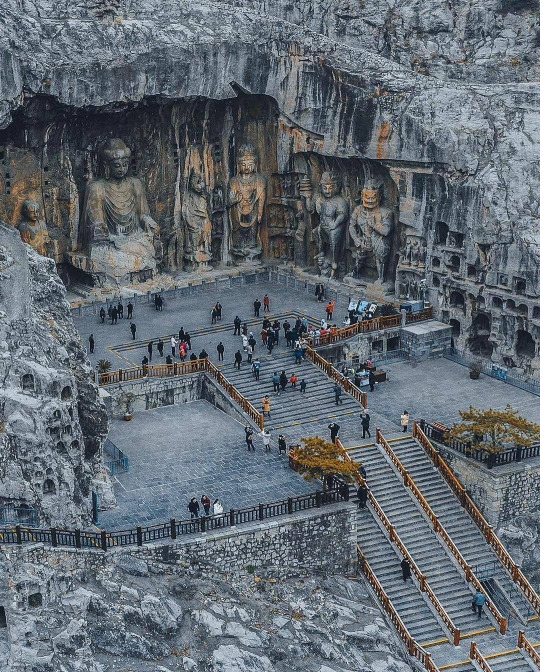
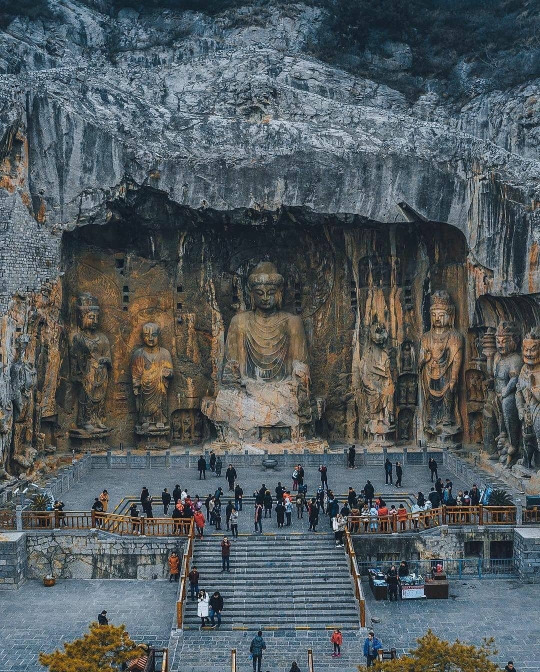
The Longmen Grottoes (龙门石窟) 'Dragon's Gate Grottoes, or Longmen Caves are some of the finest examples of Chinese Buddhist art.
12K notes
·
View notes
Text



What a legendary architectural masterpiece 😮😲😯🤯😍
10 notes
·
View notes
Text
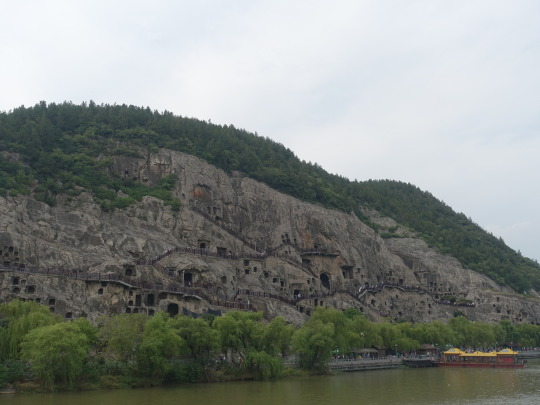




2 notes
·
View notes
Text
PRETTY

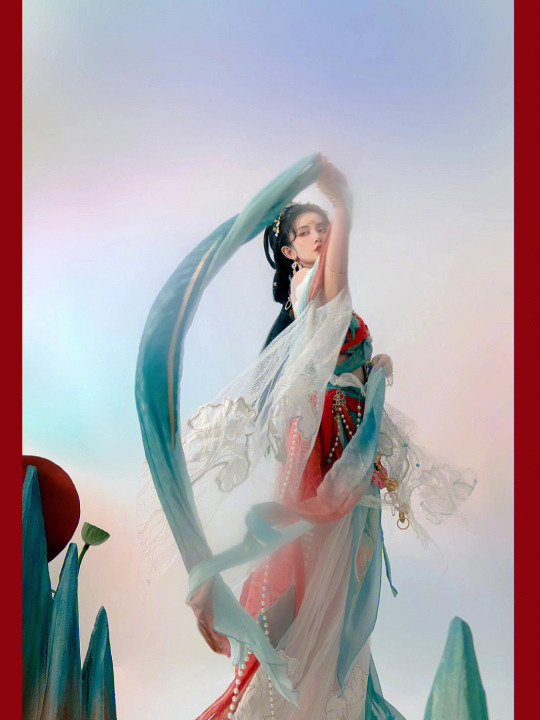
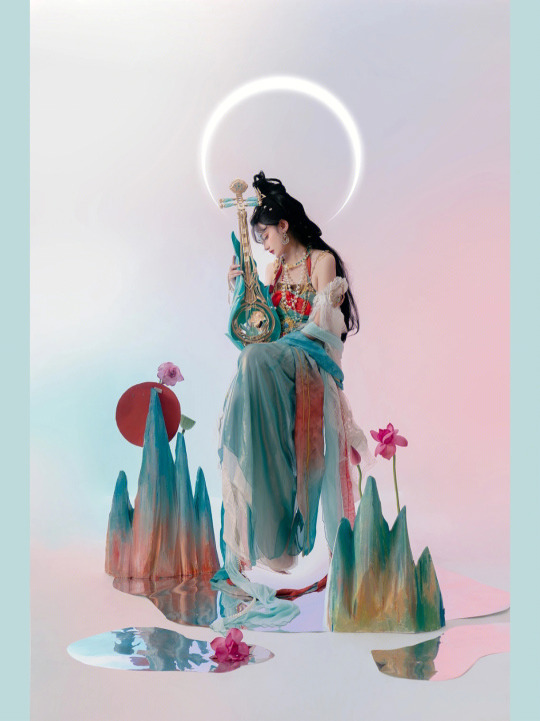
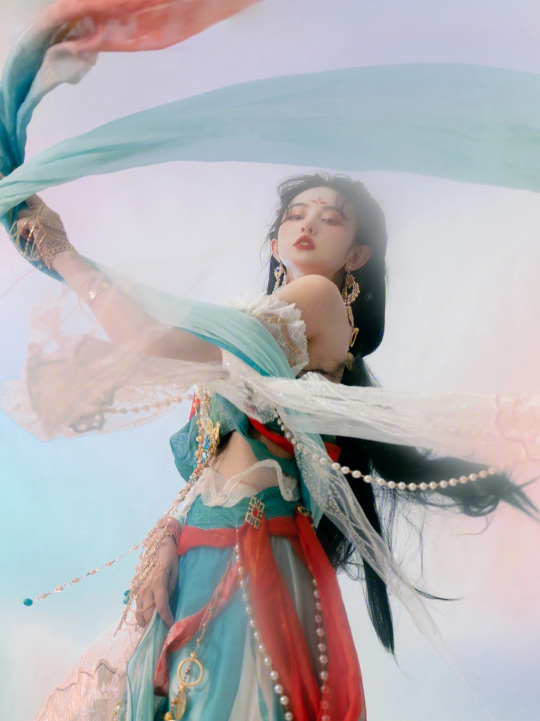

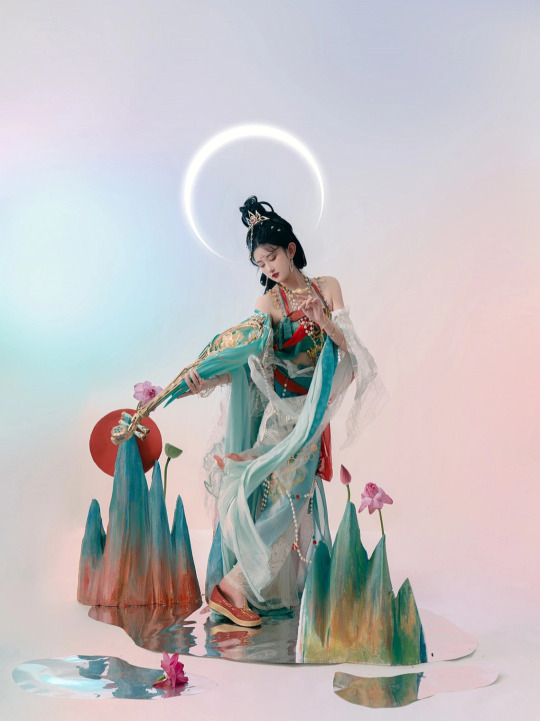
Dunhuang Style Photography 2
Qian Nv You Hun Online x Longmen Grottoes Research Institute Works from Photographer Shu Qing Cheng
#dunhuang#feitian#apsara#feitian costume#Qian Nv You Hun Online#Longmen Grottoes Research Institute#Shu Qing Cheng#hanfu#of sorts
188 notes
·
View notes
Photo

Emperor Xiaowen and his entourage worshipping the Buddha, ca.522-23
Northern Wei dynasty, China
From the Central Binyang Cave, Longmen, Henan province
Limestone with traces of pigment
H. 82 in. (208.3 cm); W. 12 ft. 11 in. (393.7 cm)
Together with a companion piece showing an empress and her attendants (now in the Nelson-Atkins Museum of Art, Kansas City), this depiction of an emperor and his entourage once adorned the Central Binyang Cave (also known as Cave 3) in the Longmen complex, near Luoyang, in Henan province. It was positioned centrally on the northeast wall between a group of protective semidivinities above and a narrative debate scene below. Xuanwu commissioned the construction of the Central Binyang Cave in honor of his father, the emperor Xiaowen (r. 471–99), and his mother, the dowager Wenzhou (d. 494); the emperor and empress in the reliefs are therefore believed to refer to his parents. A figure wearing court garments and holding a tasseled baton leads the procession. He is followed by a smaller figure wearing armor and another who stands before the emperor, holding an incense burner. The trees originally indicated the point at which the procession moved around a corner, from the north to the east wall. Several of the attendants hold lotuses or other flowers and offerings, and the entire procession can be understood as making offerings to the Buddhas in the cave, an act of merit making that would continue in perpetuity and improve the future lives of the participants.
Collection of the Metropolitan Museum of Art
#The Met#Metropolitan Museum of Art#Northern Wei dynasty#Northern and Southern dynasties#6th century#relief#religion#art#art history#Chinese#Binyang Caves#Longmen Grottoes#Henan#Xuanwu era#period dress#stone#limestone#portrait
1 note
·
View note
Text
Women wearing Tang Dynasty hanfu modeled after the depictions of patrons in the mural art of the Mogao Caves in Dunhuang (敦煌莫高窟).
They are posing in front of the Longmen Grottos (龙门石窟) in Luoyang, Henan.
335 notes
·
View notes
Text

Longmen Grottoes; Luoyang in Henan Province, China. Earliest history of Longmen Grottoes is traced to reign of Emperor Xiaowen of Northern Wei dynasty; period from 493-1127 AD.
13 notes
·
View notes
Photo
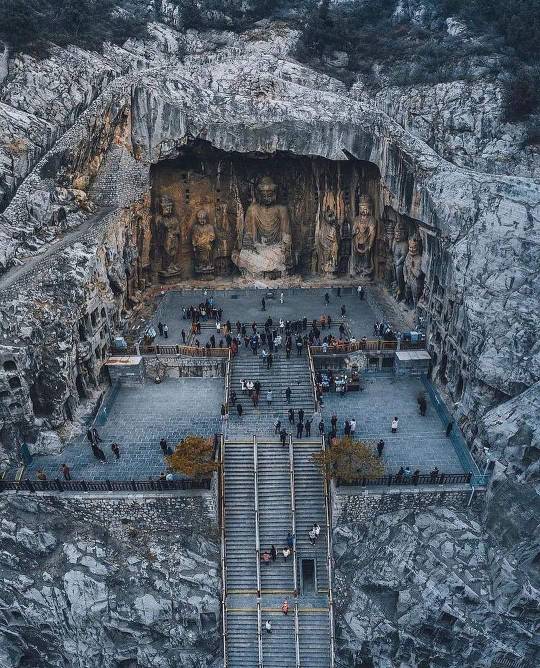
Longmen Grottos, China. The grottoes were excavated and carved with Buddhist subjects over the period from 493 AD to 1127 AD.
31 notes
·
View notes
Text
so i've gone insane in terraria and for my final cloud island of homes i'm building some stone foundations and then. god hlep me. a giant buddha. great! i laid down the cloud, then the stone steps, then--fucking fuck shit a blood moon. well good bye stylist and clumsy slime.
ok fuck. daytime. at least no solar eclipse so start to really see where those edges are, trying to get a good sense of scale of the thing and the four remaining houses below, one of which will have to host a mushroom biome. main inspiration for a lot of this will be the longmen grottoes in china, so there's a lot of work to be done. basically it's only scaffolding up right now. ok fine. and--
"a pirate army is approaching from the west"
save
exit
done with terraria for now i think
4 notes
·
View notes
Photo
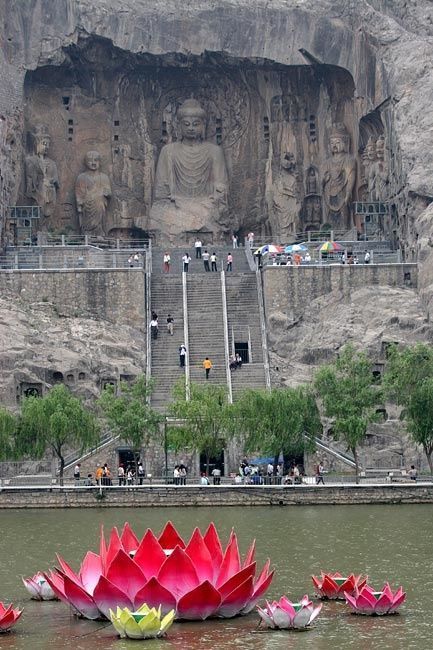
Longmen Grottoes, China
10 notes
·
View notes
Text
The Ravages of Time episode 4
I started on this episode thinking “oh, this is going to be an easy one – it’s just a little about the city, nothing bad”. I was halfway through the first paragraph when I realized I’ll need a ton of notes to explain what all these words mean… Editing and writing the notes and fact-checking everything took me ages, haha. So. Buckle up, this is gonna be a long one, I’ll probably put the notes under the read more this time so as not to clutter everyone’s dashes.
Before getting into the translation proper, I must note that there doesn’t seem to be a lot of consistency between different sources on how to translate some terms and names here. I’ll be using the terms I like best or a literal translation if I haven’t found an established one.
Additionally, a lot of dates for the early period aren’t precise (with the uncertainty being sometimes measured in centuries) due to the lack of written sources.
Episode 4
Luoyang Commonly shortened to “Luo”, formerly known as Luoyi and Luojing. As the place of origin of Ancient Chinese culture, the city has great importance. It was located in the middle of the territory of Ancient China, between the Nine Provinces [1]. Over more than 5000 years of history, 13 dynasties held their capitals there. The Xia dynasty Erlitou, Yanshi Shangcheng, Eastern Zhou dynasty capital ruins, the ancient city of Han and Wei dynasties, the Sui and Tang Luoyang city were the five great capitals lined along the Luo river, known together as the “Five Capitals of the Luoyang Basin” [2], a sight rarely seen in the world. The Longmen grottoes, the Grand Canal and the Silk Road – three sites and six locations of World Cultural Heritage are situated there [3]. – excerpt from the website of the Luoyang prefecture of the People’s Republic “Beautiful Luoyang – essential facts” Eastern Zhou royal capital In 1046 BCE, after Western Zhou dynasty formed, a city was built in Luoyang. The Duke of Zhou built Chengzhou and the city wall on the northern bank of the Luo river. In 1960s Western Zhou precious bronzeware was unearthed, containing inscriptions saying that the King of Zhou [4] “was the first to move his home to Chengzhou.” In the first year of King Zhou Ping’s rule (770 BCE), the capital was moved to Luoyi (near modern-day Luoyang in Henan Province) [5], marking the beginning of the Eastern Zhou dynasty. The residence of the rightful ruler, called the Eastern Zhou royal capital, extended from the south of modern Mouth Mang to the north of the Luo river, where the Luo and Jian rivers converged. Since the 1950s the excavation of the Eastern Zhou capital city revealed the astonishing scope of the city, precise planning, exquisite construction. It is of great importance to the study of the development of Ancient Chinese capitals.
[1] Nine Provinces – the territorial divisions of ancient dynasties, also commonly refers to China of that period as a whole (the Xia and Shang dynasties period – around 2000-1000 BCE)
[2] The Five Capitals of the Luoyang Basin – over the centuries, the locations of the cities moved a little, but they all remained on the northern (sunny) bank of the Luo river. They include:
Erlitou – a bronze age (Xia dynasty – XXI-XVII centuries BCE) site where the remains of an ancient capital were found. Erlitou is the modern name of the nearest village; the city’s original name was most likely Zhenxun.
Yanshi Shangcheng (lit. Yanshi market) – an early Shang dynasty (XVI-XI centuries BCE) city. A lot of the finds from the site seem to be related to rituals or craft like pottery and bronzeware.
Eastern Zhou dynasty capital ruins – elaborated in the next paragraph, but I’ll just offer the dates for Easter Zhou: 771-256 BCE.
The ancient city of Han and Wei dynasties – again just dates, the fun parts are (or will be, I assume) in the donghua. Han (206 BCE - 220 CE) and Wei (220-266). This is the period of the donghua. “But what about the Three Kingdoms?” you might ask – Wei dynasty is one of those three kingdoms, the one where Luoyang was situated.
Sui and Tang Luoyang city – not particularly relevant for this card since it’s in the distant future. Sui (581-618), Tang (618-907). I’m not very knowledgeable about Sui, but it’s worth noting that during the Tang dynasty the capital traveled between Chang’an and Luoyang. The main capital was in Chang’an for the majority of the period, and it was the largest city of the country (about a million people), while Luoyang was known as the “Eastern Capital”. However, during Empress Wu’s reign the capital was fully moved to Luoyang.
[3] three sites and six locations – I believe refers to the Grand Canal and the Silk Roads having to multiple protected locations, most outside of Luoyang. After analyzing the maps on the UNESCO website for ages, I think there are 4 locations from the Silk Roads complex in Luoyang.
Longmen Grottoes – also Longmen caves or “Dragon’s gate grottoes”, are a complex of artificial caves carved in the limestone on both sides of the Yi river, containing over a hundred thousand of buddhist statues, and is considered one of the finest examples of buddhist art. Most are dated to Tang or Northern Wei dynasties. Was added to the UNESCO World Heritage list as “an outstanding manifestation of human artistic creativity”.
Grand Canal – a unique waterway system going from Beijing in the north to Zhejiang province in the south. It was constructed over multiple centuries from V century BCE. It connects all five main waterbasins of China, and “represents the greatest masterpiece of hydraulic engineering in the history of mankind”. Notably, the pound locks were invented to make navigation between differently elevated portions of the canal easier and safer. The total length of the canal is almost 2000 km and some portions of it are still used for transportation.
Silk Road – probably the most universally known one, this is part of the ancient roads network going from Luoyang/Chang’an to the West. The UNESCO site includes various cities, palaces, temples, tombs and various other locations built along that route across many different cultures and eras. “These interaction and influences were profound in terms of developments in architecture and city planning, religions and beliefs, urban culture and habitation, merchandise trade and interethnic relations in all regions along the routes.”
[4] Duke of Zhou or King of Zhou? Those are two different people. The King of Zhou, judging by the date, should refer to the first king of the Western Zhou dynasty, King Wu. The Duke of Zhou was his younger brother Dan, who was heavily involved in the establishment of the new dynasty (and frankly left a much bigger impression on history). This is all from a time when the rulers of the country were referred to as kings – the title of the emperor won’t appear until the establishment of the Qin dynasty in 221 BCE.
[5] The act of moving capitals was what led to the dynasty becoming “Eastern Zhou” instead of “Western Zhou”, even though the ruling family remained the same (though – as it tends to be – there was a power struggle involved). Zhou Ping is also the reason why the dynastic name of Wu Zetian’s rule was Zhou dynasty – she claimed ancestry from Zhou Ping’s youngest son.
----------------
Spoiler time! Well, not really, because most of this episode is fighting... but I still have things to say!
"It should be the Kuaiji army of Sun Jian from Jiangdong". Jiangdong - lower Yangtze area, Kuaiji - Kuaiji commandery, conquered by Sun Jian's son a few years before the events of the donghua
Unlike a lot of secondary characters, both Hua Xiong (Dong Zhuo's general) and Huang Gai/Uncle Huang (from Sun Jian's army) are real people. (Meaning you don't have to worry about Huang Gai for another... say, ten years). Not much is known about them except that they did indeed take part in the conflict between Dong Zhuo and the coalition.
2 notes
·
View notes
Text
Sudden influx of Chinese sex bots spamming the asexual tag with long articles in Chinese characters explaining the history of the Longmen Grottoes?
I mean I guess the Longmen Grottoes are very interesting, but I suspect the purpose of the posts has more to do with the dodgy links at the bottom.
I have been reporting these for spam, if others could do the same that would be great.
2 notes
·
View notes
Text
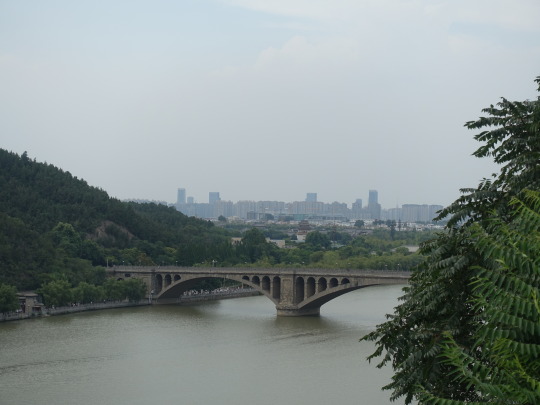
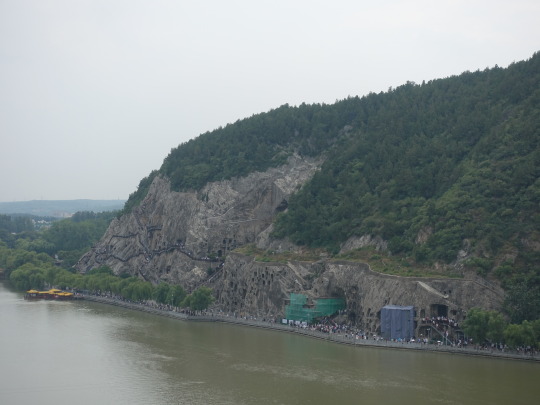
0 notes
Text
Discover the historical treasures of Luoyang, from the Longmen Grottoes to ancient temples, with Hello China Trip! Book your custom tour today at hellochinatrip.com. #LuoyangTours #TravelChina #HelloChinaTrip #CulturalHeritage
0 notes
Link
Visit highlights of Luoyang including Longmen Grottoes,White Horse Temple and Luoyang old town(Lijing street) with this private day tour from Luoyang city. You will be picked up and dropped off from your Luoyang hotel. #Tours2Go #ToursToGo
0 notes
